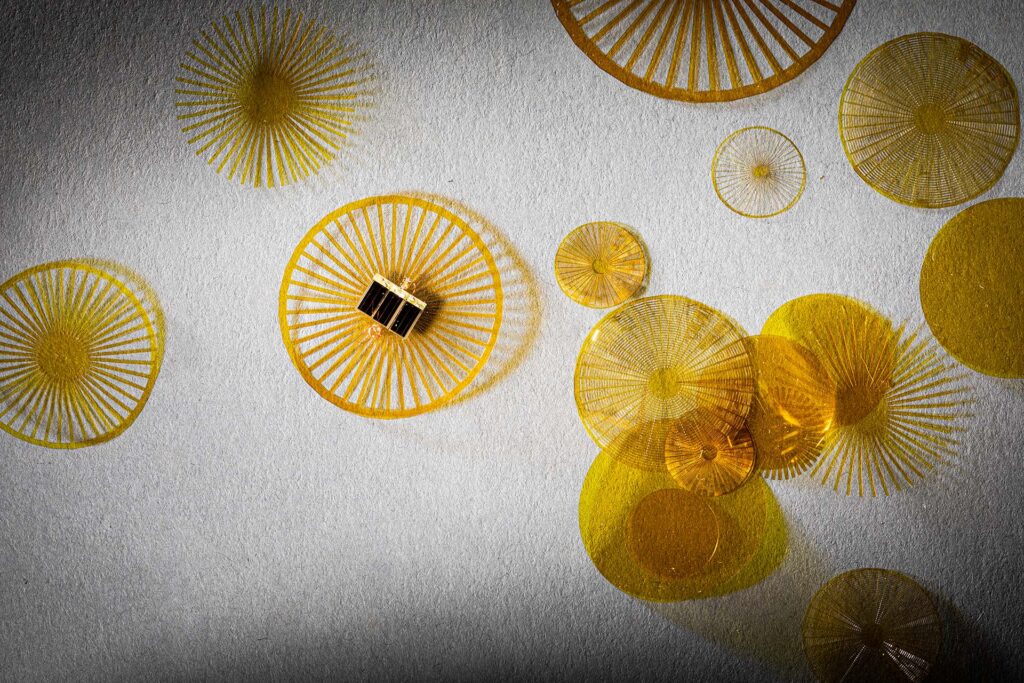
Plants cover a large fraction of the Earth’s land mass despite most species having limited to no mobility. Many plants have evolved mechanisms to disperse their seeds using the wind. A dandelion seed, for example, can travel as far as a kilometer in dry, windy, and warm conditions. Inspired by this, we demonstrate wind dispersal of battery-free wireless sensing devices.
Our millimeter-scale devices are designed on a flexible substrate using programmable, off-the-shelf parts to enable scalability and flexibility for various sensing and computing applications. The system is powered using lightweight solar cells and an energy harvesting circuit that is robust to low and variable light conditions and has a backscatter communication link that enables data transmission. To achieve the wide-area dispersal and upright landing that is necessary for solar power harvesting, we developed dandelion-inspired, thin-film porous structures that achieve a low terminal velocity and have an aerodynamic stability with a probability of upright landing of over 95%.

Our results in outdoor environments demonstrate that these devices can travel 50–100 meters in gentle to moderate breeze. Finally, in natural systems, variance in individual seed morphology causes some seeds to fall closer and others to travel farther. We adopt a similar approach and show how we can modulate the porosity and diameter of the structures to achieve dispersal variation across devices. This demonstrate an exciting vision where hundreds to thousands of battery-free devices can be dispersed across a large area like farms, forests, glaciers and other hard to reach areas.
Check out the Nature journal paper: https://www.nature.com/articles/s41586-021-04363-9